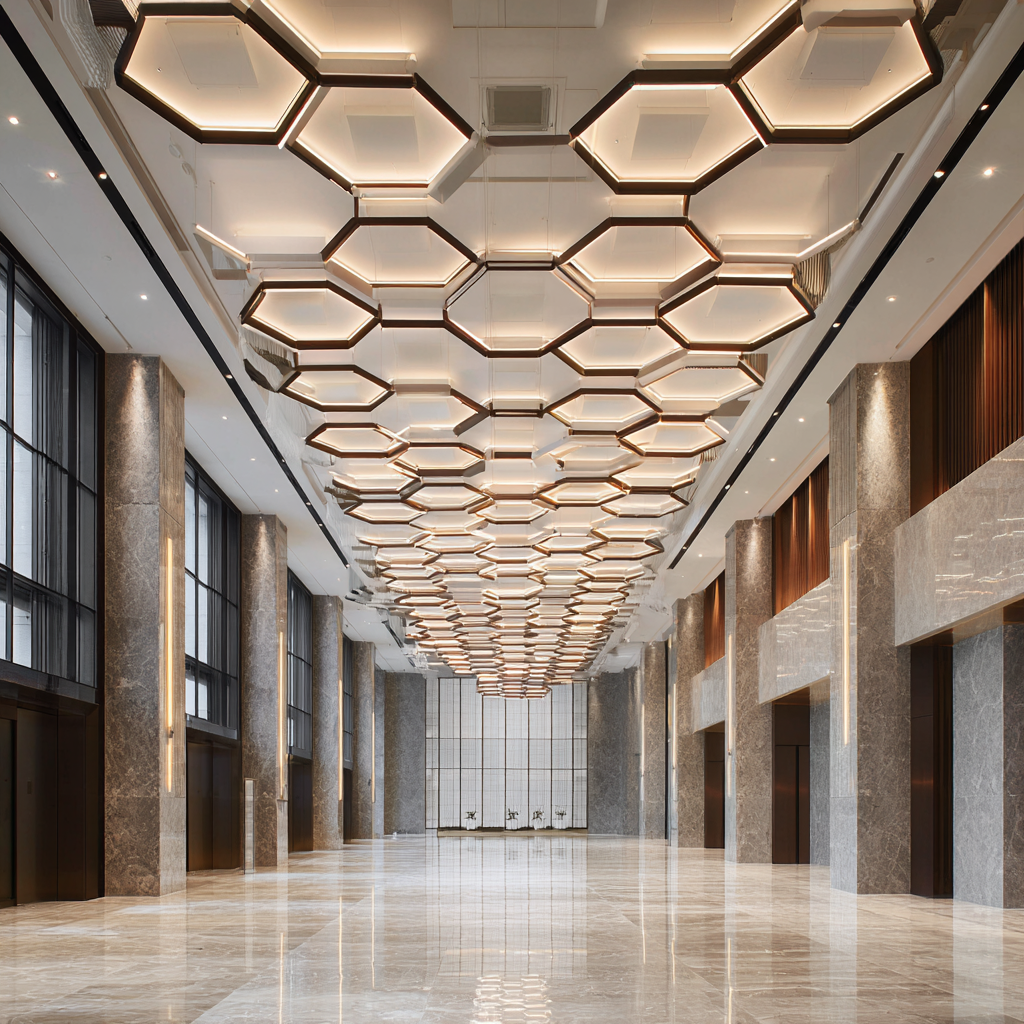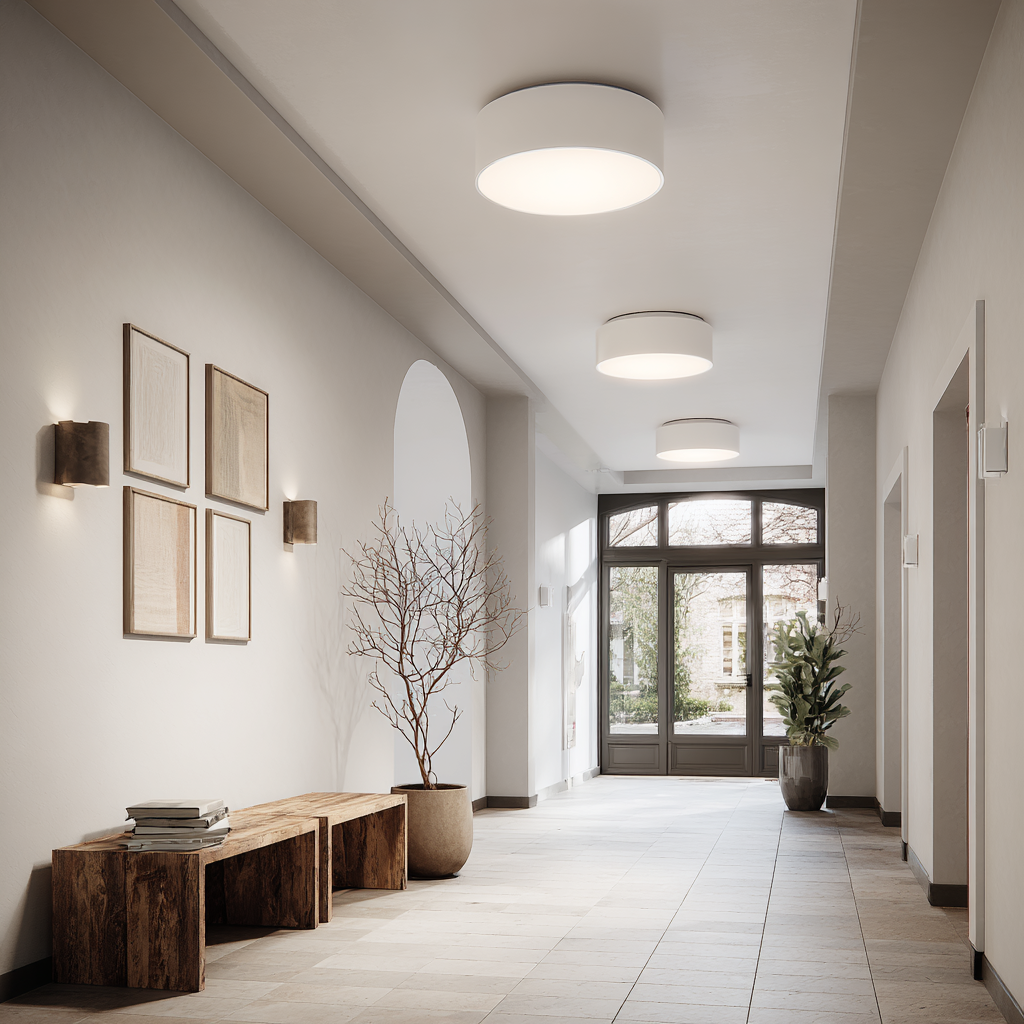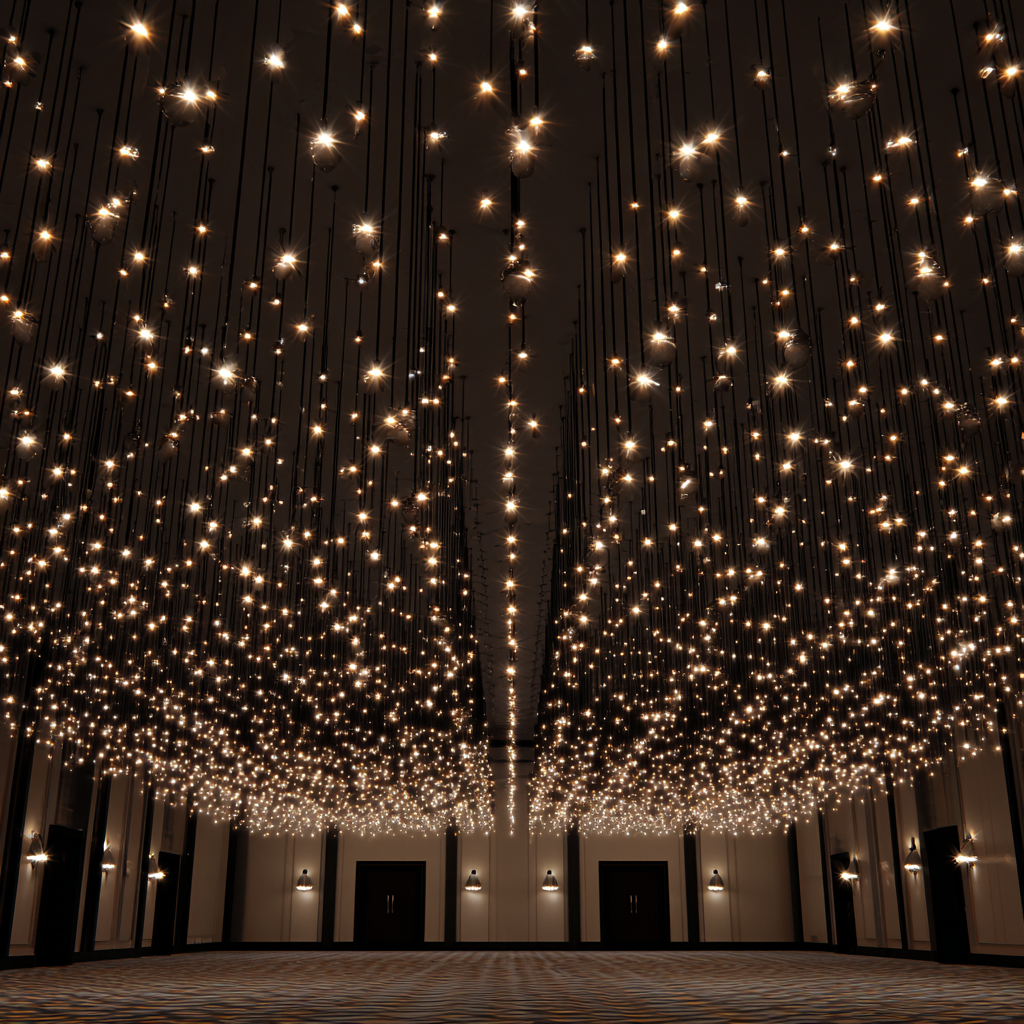The Future of Hall Lighting Innovations for Global Buyers
In the rapidly evolving landscape of interior design, innovations in ceiling lights for hallways are poised to revolutionize the way global buyers approach elegance and functionality in their spaces. According to a recent market report by ResearchAndMarkets, the global lighting market is expected to reach $154.8 billion by 2026, with smart lighting solutions leading the charge. This surge is largely driven by the increasing demand for energy-efficient and aesthetically pleasing lighting fixtures that enhance ambiance while reducing energy consumption. As trends shift towards integrated smart technologies and sustainable materials, the future of ceiling lights for hall design is not just about illumination, but about creating dynamic environments that cater to modern lifestyles.
This blog will explore pioneering advancements and innovative examples in hall lighting, highlighting key designs that are transforming this essential space in homes around the world.
Innovative Technologies Shaping the Future of Hall Lighting
Innovative technologies are reshaping the future of hall lighting, paving the way for a more connected and sustainable ecosystem. The recent trends in smart lighting solutions demonstrate a shift towards environmentally responsible practices, with a growing market for energy-efficient systems projected to reach over $80 billion by 2026. This rapid growth is driven by an increased demand for energy conservation and smart city infrastructure, highlighting the urgency for manufacturers to adopt cutting-edge technologies that enhance connectivity and usability.
For industry stakeholders looking to stay ahead, embracing advancements such as IoT integration in lighting designs can lead to significant benefits. This connectivity allows for real-time monitoring and control, improving energy efficiency by up to 40%. Adopting such innovative approaches can not only reduce operational costs but also elevate user experiences, creating spaces that are both functional and inviting.
Tips for businesses include investing in modular lighting systems that allow for customization and expansion as needed. Additionally, consider collaborating with tech partners who specialize in sustainable innovations to explore co-development opportunities. By leveraging these insights, companies can position themselves at the forefront of the evolving hall lighting landscape.
Sustainable Lighting Solutions: Eco-Friendly Options for Global Buyers
Sustainable lighting solutions are increasingly becoming a priority for global buyers, as the demand for eco-friendly options rises. With 2023 showcasing a significant shift in consumer behavior, it’s clear that the eco-friendly consumer is more than just a trend. Half of global consumers now identify as more environmentally conscious, driving many sectors, including home lighting, to adapt. This growing awareness pushes manufacturers to innovate sustainable designs that not only minimize energy consumption but also reduce overall carbon footprints.
As the real estate market evolves, integrating sustainable lighting solutions in high-end home features will likely become a hallmark of luxury living by 2025. Consumers are looking for products that reflect their values, prompting brands to innovate eco-friendly lighting technologies. These advancements include energy-efficient LED systems, biodegradable materials, and smart technologies that optimize energy use. By prioritizing sustainability in hall lighting, buyers can enhance their living spaces while contributing to a greener planet.
The Future of Hall Lighting Innovations for Global Buyers - Sustainable Lighting Solutions: Eco-Friendly Options for Global Buyers
| Lighting Type |
Energy Efficiency (Lumens/Watt) |
Lifespan (Hours) |
Material Used |
Recyclability |
| LED Pendant Lights |
80 |
50,000 |
Aluminum, Glass |
Yes |
| Solar-Powered Lights |
65 |
25,000 |
Plastic, Metal |
Yes |
| Recycled Glass Fixtures |
70 |
30,000 |
Recycled Glass, Steel |
Yes |
| Organic LED (OLED) Panels |
90 |
20,000 |
Organic Materials |
Yes |
| Smart Lighting Systems |
75 |
40,000 |
Various Composites |
Partially |
Smart Lighting Systems: Enhancing Functionality and User Experience
As the demand for advanced lighting solutions increases, the global market for building lighting is projected to expand significantly, with a focus on smart lighting systems. According to recent research, the building lighting market is expected to grow by leaps and bounds, particularly driven by innovations in LED technology and the rise of intelligent lighting systems. These systems not only improve energy efficiency but also enhance functionality, enabling users to tailor their lighting environments to meet specific needs.
In 2032, it is anticipated that the market for lighting control systems, including both wired and wireless options, will exhibit robust growth, propelled by consumer preference for automated solutions. This demand reflects growing awareness of how smart lighting can facilitate a more intuitive user experience in both residential and commercial settings. The integration of smart technology into lighting systems aligns with global trends towards sustainability and energy conservation, supporting the vision of smarter, greener buildings.
Moreover, the prominence of intelligent building technologies is becoming crucial as organizations strive for net-zero emissions and sustainable practices. Investing in smart lighting not only enhances user experience but also contributes to the overall efficiency and environmental responsibility of buildings. As we look to the future, innovations in smart lighting systems will undoubtedly redefine spaces, making them more responsive and adaptive to the needs of their occupants.
Trends in Hall Lighting Design: Aesthetic and Practical Considerations
As the demand for functional yet visually appealing lighting solutions continues to rise, hall lighting design is evolving to meet both aesthetic and practical considerations. Contemporary trends emphasize a seamless blend of technology and art, allowing designers to create spaces that are not only well-lit but also reflective of a particular style or brand identity. The use of LED technology has transformed the landscape, providing energy efficiency while enabling a vast spectrum of colors and effects, from warm and inviting to cool and modern.

Furthermore, the integration of smart lighting systems is becoming increasingly prevalent in hall design. These systems not only provide convenience through remote control and automation but also enhance the user experience by allowing for customizable settings. Designers are now focusing on how lighting can shape the ambiance of a space, emphasizing the importance of layers in lighting; combining ambient, task, and accent lighting to create depth and dimension. This holistic approach ensures that hall lighting serves both practical needs and aesthetic aspirations, making it a vital component in any architectural project.
Global Market Insights: Emerging Players and Consumer Demands in Hall Lighting
The global market for hall lighting is witnessing significant shifts driven by emerging players and evolving consumer demands. As the need for innovative and aesthetically pleasing lighting solutions grows, manufacturers are increasingly focusing on integrating smart technologies and sustainable materials into their products. Global buyers are now seeking options that not only enhance the ambiance of hall spaces but also offer energy efficiency and versatility. The rise of remote and smart controls, along with customizable lighting options, is redefining how consumers interact with their environments.
Additionally, the expansion of the global home decor market, projected to increase from $802.26 billion in 2025 to $1,097.51 billion by 2032, underscores the importance of strategic market insights for stakeholders in the hall lighting sector. As urbanization accelerates and consumer preferences shift towards contemporary designs, companies must remain agile in their product offerings to stay competitive. Understanding the dynamics of consumer behavior and the impact of technological advancements will be key for businesses aiming to capture a larger share of this flourishing market.
The Future of Hall Lighting Innovations
This chart represents the projected market demand for various hall lighting innovations, showcasing the increasing popularity of LED, smart lighting, and energy-efficient designs as consumers focus on sustainability and technology in their choices.

Home
About Byone
Factory Tour
Products
Project Portfolio
Download
Blog
Contact Us


